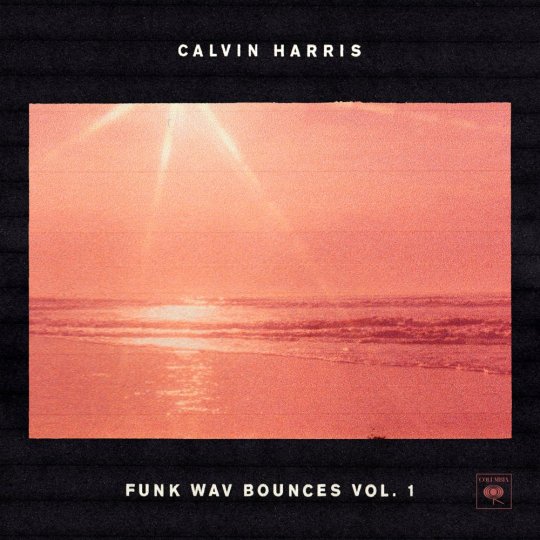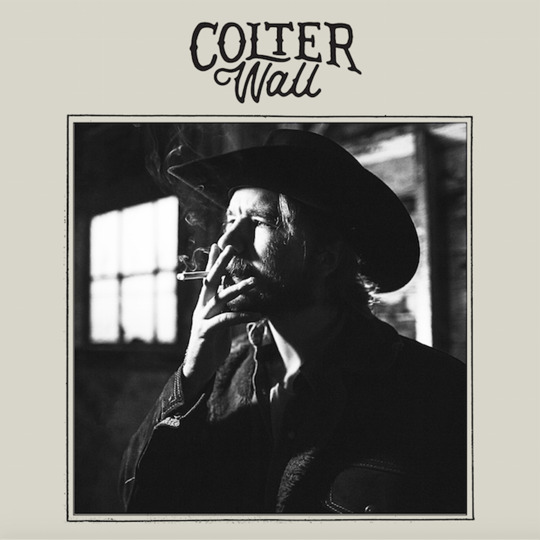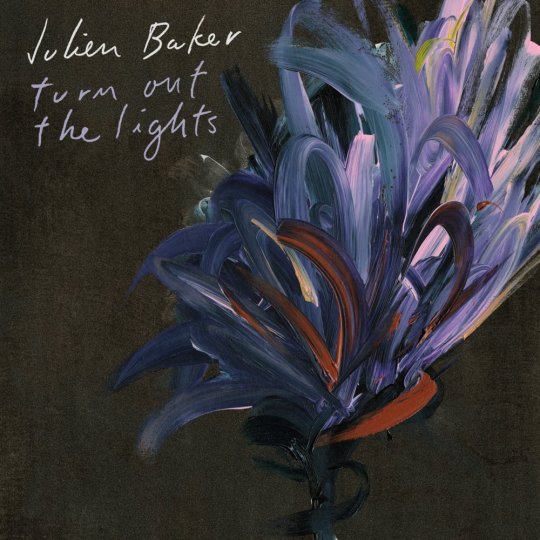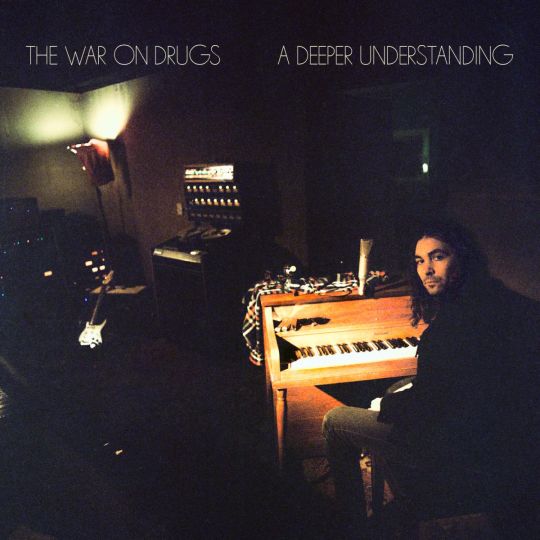#without Kate much of the thematics collapsed
Explore tagged Tumblr posts
Text
Not only a trans metaphor, but a metaphor for religious deconstruction and queer love too:
Our oppressive-religion-leader coded villian says to two self made gods in love: “ same person. It’s a little unnatural”
Replace “person” with “sex” and your jaw will drop
every time I see a "kate herron corrected the bad queer rep in loki with her work in doctor who" take i'm like. you fools. you poor silly things. you have gazed upon a trans allegory that bypassed disney-marvel censorship and you sneered at it? you watched these characters reject their assigned roles, join together in solidarity, and survive despite the system rigged against them and you shun it? because you didn't like a romantic pairing? for shame
#YES YES YES#YOU FUCKING GET IT#for this story about identity crisis in which the main character becomes obsessed with a female version of himself & aspires to be like her#loki (the good series)#ALAO SYLVIE IS LITERALLY A METAPHOR FOR BEING TRANS#AND SYLVIE AND LOKIS RELATIONSHIP ITSELF IS A THINLY VEILED ALLEGORY FOR A SAME SEX COUPLE BEING PERSECUTED BY RELIGION#PEOPLE ARE SO FUCKING STUPID#and mobius is the most boring character in the entire show btw#also can we talk about how the whole “I’m jealous of my same gender love interest” is a UNIVERSAL QUEER EXPERIENCE???#sylki is t4t and bi4bi#t4t Sylki#is canon#they’ve both been confirmed or implied genderfluid (Sylvie by artist Wesley Burt)#I’m gonna fight someone#I hate being media literate sometimes#season 2 was a disappointment#without Kate much of the thematics collapsed#At Least the God of Stories arc worked out#sylvie was robbed#and ravonna#and Verity#hmmm should I just keep listing MCU women#sylki is the hill I die on#sorry
36 notes
·
View notes
Text
Ars’ summer reading guide for our very surreal summer
Enlarge / A lot of literature in this.
Look, we’re admittedly biased around the Ars Orbital HQ. Whether the best of times or worst of times, we routinely find comfort in a good book. COVID-19 has changed so much about our day-to-day lives, including some of our entertainment habits around things like gaming or streaming TV and film. But when it comes to precious reading time in between work and busy personal lives, we’re continually drawn to the stories that grip us—as grim as some of those may be.
This year’s staff summer recommendation/To Be Read list has a few newer releases, plenty of old classics, and a lot of alternate reality/sci-fi. Ars’ book tastes remain nothing if not on-brand, meaning we may never get through one of these without Douglas Adams being mentioned. Here’s everything, Hitchhiker’s Guides and others, we’ve been escaping to.
Enlarge / The Collapsing Empire, by John Scalzi
Sparth
Series starters
Sci-fi fans who enjoy engaging characters and story driven more by human interaction than technical wharrgarbl will enjoy John Scalzi’s latest trilogy, The Interdependency. The third book just released last week, and it ties things up neatly—a first, for Scalzi. The Interdependency is an old-school galaxy-spanning empire, with a twist—habitable planets are almost impossibly difficult to find, and in an effort to curtail war, the Interdependency was designed so that no system can survive without trade with the others.
This arrangement is fine, until systems begin being inexorably—and permanently—cutting off from access to one another, heralding a collapse of civilization itself. Scalzi lightly channels the kind of wry humor the late, great Douglas Adams was best known for, though never going over-the-top into outright comedy.
If you’re looking for something a little further off the beaten path, I’ve also been enjoying a series called The Murderbot Diaries, by Martha Wells. I’m only a couple of books into the five-book series, but Wells’ description of a confused rogue AI in a cyborg body, with absolutely everything designed, maintained, and forcibly supplied by the lowest bidder, is both charming and engaging. The Murderbot has its own desires, needs, and goals—it’s just not too clear what those are, beyond doing as half-assed a job as possible in order to leave more time for trashy soap-opera consumption. —Jim Salter, Technology Reporter
Hachette
Sci-fi, lots of sci-fi
I read, um, kind of a lot—between 50 and 100 novels a year, most years—and I’m always happy to talk books. In these quarantimes, leaning in and running away seem to be the two big categories in my reading. Sticking to books that were published in the last decade (so leaving out annual comfort re-reads of Lloyd Alexander and Terry Pratchett), I have some thoughts.
If you like motley crews in space: Becky Chambers’s Wayfarer series, starting with The Long Way to a Small, Angry Planet. Chambers’s books are optimistic, character-driven science fiction; stories about people and how they feel in a strange and exciting future. Soft and cozy reading.
Just this week I also finished the two books to date in Alex White’s Salvagers series, starting with A Big Ship at the Edge of the Universe. Motley crew of talented space pirates, but also with magic and a set of moral codes. Zippy reading, genuine fun.
If you like cities: I cannot recommend N.K. Jemisin’s latest, The City We Became, highly enough, especially if you love cities and double especially if you’ve spent any time in New York. I haven’t lived in New York City since 2008, and I still could smell and feel and hear every single page. Cities have souls, and this is their story.
If you liked Hidden Figures: Mary Robinette Kowal’s Lady Astronaut books, The Calculating Stars and The Fated Sky. As a Washington, DC, resident, I didn’t love my home being wiped off the map at the start of the apocalypse, but for all that a story of doom kicks off the tale, it is optimistic, Right Stuff spacefaring fiction at its finest.
And if you really want to lean into the apocalypse: Chuck Wendig’s Wanderers poses a pandemic from an animal-borne virus striking humanity right against the landscape of a US presidential election year. It’s the wrong book to read in our actual 2020 if you’re prone to giving yourself nightmares, but it’s still a very good book. —Kate Cox, Tech Policy Reporter
youtube
Jordan Peele and J.J. Abrams are among the executive producers of HBO’s Lovecraft Country.
Two greats set in the past
Now is the perfect time to read Lovecraft Country, the 2016 dark fantasy/horror novel by Matt Ruff, since HBO’s adapted series will debut in August. Set in the Jim Crow era of the 1950s, it’s structured almost as a series of short stories, although everything is inter-related and hangs together beautifully as a whole. The first quarter focuses on Atticus, a black Korean war veteran and big H.P. Lovecraft fan, despite the author’s notorious racism. When his estranged father disappears, leaving a cryptic message, Atticus sets out on a road trip from Chicago’s South Side to rural Massachusetts. He’s accompanied by his Uncle George—publisher of The Safe Negro Travel Guide—and his childhood friend Letitia.
There are plenty of sly references to the works of Lovecraft for the astute reader, as we encounter a secret cabal called the Order of the Ancient Dawn, a haunted house, a strange pocket universe, time shifting, shape-shifters, an evil mannequin, and a cursed book. What makes the book so ingeniously subversive, however, is that the worst monsters are not eldritch terrors or a Shoggoth in the woods; it’s the stark racism and bigotry our protagonists encounter along the way.
Beyond that, I’ve got one other recommendation: Iain Pears‘ sprawling 1997 novel, An Instance of the Fingerpost. Part historical murder mystery, part philosophical rumination on the unreliability of human memory and personal narratives—aka the “Rashomon effect” after Akira Kurosawa’s classic 1950 film— the novel remains one of my all-time favorite reads that I return to every few years. The title refers to a quote from Francis Bacon, who held that all evidence is fallible, and yet there can be “one instance of a fingerpost that points in one direction only, and allows of no other possibility.”
Pears is a former BBC reporter who garnered early success with his art-history mysteries featuring fictional detective/art historian Jonathan Argyll. Those novels are light and quite fun, but with Fingerpost, Pears attains a whole new level of thematic complexity. It’s almost as if he started out writing a simple tale of a 17th-century Oxford murder, only to be carried away as that world and its denizens came alive for him. It’s been justly compared to Umberto Eco’s 1980 bestselling novel The Name of the Rose, although I prefer Fingerpost.
This was a tumultuous period of enlightenment, when new scientific ideas were flourishing and conflicting with religious institutions, and political intrigue was everywhere. There are four sections, each narrated by a different character, each remembering their version of the 1663 arsenic poisoning of a man named Robert Grove many years later. A servant girl confessed, but the four witnesses—an Italian physician, the son of an alleged Royalist traitor, a cryptographer, and an Oxford archivist—each identified a different culprit, and only one will ultimately reveal the truth about what really happened. Pears masterfully evokes Restoration England, as Charles II regained the throne after Oliver Cromwell‘s short-lived attempt at a republic, and his characters (historical figures and fictional ones) are richly detailed. It’s a long book but so riveting that you’ll be tempted to devour it as fast as possible, and you’ll be pondering the nature of truth entirely by the end. —Jennifer Ouellette, Senior Writer
Source link
قالب وردپرس
from World Wide News https://ift.tt/3ekIwZB
2 notes
·
View notes
Text
[Review] ESCAPE FROM CANNIBAL FARM Suffers From Comparisons to TEXAS CHAINSAW MASSACRE
New Post has been published on https://nofspodcast.com/review-escape-cannibal-farm-suffers-comparisons-texas-chainsaw-massacre/
[Review] ESCAPE FROM CANNIBAL FARM Suffers From Comparisons to TEXAS CHAINSAW MASSACRE
There’s a spectre looming over the early frames of director Charlie Steeds’ Escape From Cannibal Farm, and it dates back to 1974. You simply can’t make a horror film about people being terrorized by a man wearing the face of dead people wielding a chainsaw without invoking comparisons to The Texas Chainsaw Massacre. Unfortunately Steeds’ take on the same idea is fairly derivative, which means that the first quarter of his 2017 film (out now on VOD) feels like a watered down homage to Tobe Hooper’s classic.
Escape From Cannibal Farm opens with a classic 80s slasher narrative device: a prologue featuring a murder/accident that establishes the origin of the monster. Here it involves two boys kidnapping a younger boy, tossing him into a burlap sack and accidentally setting him on fire. These events, presented in slow-motion and silent save for a non-diegetic score, are witnessed by Bethany Hansen (Charlotte Roest-Ellis) from her kitchen window. Although she and her husband Hunt (Barrington De La Roche) manage to save the boy, his face is badly burned. Bethany eventually snaps, lighting herself on fire and leaving Hunt a broken, unbalanced man raising a deformed child alone on the economically depressed family farm.
With the prologue dispensed with, we cut to the Harvers, a feuding family crammed into a caravan for a camping vacation. The family is comprised of matriarch Katherine (Rowena Bentley), her new husband Wesley (Toby Wynn-Davies), profane and annoying eldest son Toby (David Lenik) and much younger son Sam (Dylan Curtis). Also present are daughter Jessica (Kate Marie Davies) and her tennis-whites boyfriend, Kurt (Joe Street) – big city vegans who are tagging along in the hopes that Katherine will bail them out of financial debt.
Steeds, who also wrote the screenplay, wastes no time establishing the dysfunctional nature of the family. They’re immediately presented as a disagreeable bunch; there’s plenty of sniping, insulting and belligerent comments tossed back and forth before the credits have finished rolling.
After a brief rest stop encounter with the seemingly senile Hunt, they set up camp for the night just past the Hansen farm. By this point Jessica and Hunt‘s financial issues have been revealed, the children’s dislike for gruff “man’s man” Wesley is evident and Katherine‘s delusional need to play mediator has been established.
Clearly the family is about to be tested. Time for some bloodshed.
Escape From Cannibal Farm‘s greatest asset – and, weirdly enough, one of its greatest weaknesses – is gore. This is a film featuring, as the title clearly infers, a cannibal farm and its main villain is a Leatherface knock-off, so the expectation is that bad stuff will befall this family of unlikeable characters. Lo and behold the violence starts early and pretty much continues for the 100 minute runtime, starting with a fire that nearly burns Katherine to death. This development drives the family to the Hansen farm where Wesley is shot and Kurt gets a pitchfork up the rear. Eventually others characters are bludgeoned with sledgehammers, scalped, burned alive, and more than a few limbs are cut off. There’s a lot icky stuff to feast your eyes on.
Alas oftentimes the special effects are unconvincing. Steeds employs an “imply, don’t show” approach that frequently works, but when evidence of the violence is glimpsed up close, he is unable to cover up the film’s low budget limitations with make-up.
This would be forgivable if several of the violent setpieces were not undermined by the film’s flawed internal logic, which, to put it lightly, does not resemble our Earth logic. Characters are routinely maimed in such drastic ways that there is no possible way that they would be able to survive, and yet they do (repeatedly!).
Take an early example: after everyone is imprisoned in electrified cages, one character panics, places both hands on the wire and both hands promptly explode. To say that this is not how electricity impacts the body is an understatement. While suspension of disbelief is often a requirement for horror fans, Escape From Cannibal Farm routinely asks too much of its audience.
I can overlook the fact that Bethany‘s skeleton, hanging out Psycho/Black Christmas-like in a rocking chair in the attic, is so pristine that it is obviously a prop from a HS lab. A character who winds up in a lit industrial oven and survives to battle an attacker with seemingly no physical impairment? Not so much. Children who have lost both feet in flashback, but have them in the present? That’s just bad continuity. A character is partially scalped, but suffers barely any blood loss and easily manages to murder his attacker? These are poorly plotted gaps that are so obvious that they take viewers out of the film.
It’s unfortunate that there are so many of these problems because there are some tantalizing elements in the film. Once Escape From Cannibal Farm steps out of the shadows of its Texas Chainsaw Massacre homage to tell its own story, it becomes something unexpected. There’s a cursory thematic consideration of how revenge begets more revenge, as well as a briefly introduced suggestion that a cottage industry of affluent cannibals ala Hostel has popped up in response to Hansen‘s activities. Most interesting of all is how the film codifies Jessica‘s ascension to Final Girl status: unlike other films where the protagonist takes up arms against her attackers, Escape From Cannibal Farm suggests that this is a flawed and messed up development, not something heroic and empowering.
Alas, there’s not quite enough of these fascinating bits to justify a recommendation. In the end Escape From Cannibal Farm collapses under its flawed logic, lengthy runtime and confused narrative motivations.
1/4 eberts
#escape from cannibal farm#horror vod#new horror#new horror 2018#new horror vod#slasher#slasher new horror#texas chain saw massacre#texas chainsaw massacre#tobe hooper
0 notes
Text
BEST ALBUMS 2017
2017. Great year for music. Weird/terrible year for mostly everything else. You know how this works... let’s go.
Hon. Mentions: Mura Masa - Mura Masa; Everything Now - Arcade Fire; Teenage Emotions - Lil Yachty; Antisocialites - Alvvays; Ti Amo - Phoenix; Humanz - Gorillaz; Harry Styles - Harry Styles; Good for You - Amine; All American Made - Margo Price; This Old Dog - Mac Demarco’ Pleasure - Feist; Life Without Sound - Cloud Nothings; Big Fish Theory - Vince Staples; Aromanticism - Moses Sumney; Culture - Migos; More Life - Drake; Something To Tell You - HAIM; Hug of Thunder - Broken Social Scene; City of No Reply - Amber Coffman; Ctrl - SZA; Now That The Light Is Fading - Maggie Rogers; Blue Chips 7000 - Action Bronson; The Wild - Rural Alberta Advantage; American Teen - Khalid; Reputation - Taylor Swift; Run The Jewels 3 - Run The Jewels; Process - Sampha; Japandroids - Near to the Wild Heart of Life; Rainbow - Kesha
10) Half-Light - Rostam

Two things pushed the former Vampire Weekender’s debut solo album into my top ten, despite its shortcomings (that garbled dialogue section on ‘When’ almost lost it for me)... (1) I’m an all time sucker for Vampire Weekend, and this album at its best moments sounds like the very best parts of Modern Vampires, (2) BIKE DREAM. The glimmering centrepiece of a lead single might be the single best song of 2017. Although the rest of the album doesn’t quite match Bike Dream’s energy, it is airy and delightful in its own way. While Half-Light misses the boldness of a frontman like Ezra Koenig (busy with his own vanity projects at the moment) or any of the superstars that Rostam Batmanglij has worked with since parting ways with VW (Frank Ocean, Hamilton Leithauser, Carly Rae Jepsen, among others), there is an undeniable charm to the tentativeness of Rostam’s voice as he takes centre stage for the first time. A worthy solo debut.
Highlights: Bike Dream, Gwan, When, Wood, Thatch Snow
9) Funk Wav Bounces, Vol. 1 - Calvin Harris

Funk Wav Bounces Vol. 1 is the Scottish DJ’s first Post-Swift album and the closest thing 2017 had to an official summer soundtrack. Harris reinvented himself, trading in the club for the beach and teaming up with a cadre of collaborators from established hip-hop stars (Migos, Pharell, Nicki Minaj) and rising stars (Khalid, Lil Yachty and Toronto’s own Jessie Reyez). Harris displays his talents as curator on Funk Wav Bounces, matching each track to just the right combination of guest artists with often inspired combinations (Frank Ocean and Migos on Slide, Kehlani and Lil Yachty on Faking It). And despite the varied cast, it maintains a consistent sound throughout -much moreso than its chief rival and closest contemporary in the summer collaboration album field this year, DJ Khaled’s wildly inconsistent and gloriously self-indulgent Grateful. FWB sounds exactly like its title - a collection of tropical jams sure to keep any backyard BBQ bumpin’.
Highlights: Slide (ft. Frank Ocean and Migos), Rollin (ft. Future and Khalid), Prayers Up (ft. Travis Scott and A-Trak), Faking It (ft. Kehlani and Lil Yachty)
8) Dirty Projectors - Dirty Projectors

2017′s self-titled Dirty Projectors release could not be more different from 2012′s Swing Lo Magellan. Most notable, of course, is the absence of Amber Coffman. Not just for her vocals, but for the fact that Dave Longstreth seemingly crafted the entire album around her breakup with him and the band (although he swears it isn’t as autobiographical as it sounds). There’s almost a chutzpah to Longstreth titling the Coffman-less album “Dirty Projectors” as if to put his own stamp on the meaning of the band (as he quotes KISS’ Gene Simmons: “a band is a brand”). Listening to the album, you can hear Longstreth working through the emotions of the breakup in real time, from bitterness, to regret, to resignedness and ultimately, resolution. Longstreth seems to have evolved the Projectors’ sound in his years since Swing Lo, having spent time collaborating with more mainstream pop and hip-hop artists. Dirty Projectors the album sheds the acoustic jam band aesthetic for tightly produced, electronic beats and vocal distortions. The result is a complex and eminently enjoyable album that delivers surprises on every track.
Highlights: Keep Your Name, Up In Hudson, Little Bubble, Cool Your Heart (ft. Dawn Richard)
7) Melodrama - Lorde

It’s amazing to think Ella Yelich-O’Connor is only 21 years old. Whereas Pure Heroine, released when she was 16, was a quintessential teen pop record, Melodrama, her second album, is a testament to newfound maturity. The New Zealander has done some growing up since she sang about “getting on [her] first plane” on Heroine, and it shows through the lyrical and musical diversity of this album. Melodrama ranges from anthems (Supercut, Green Light), to bangers (the Tove Lo co-written Homemade Dynamite) to ballads (Liability) all the while retaining an authenticity and unique weirdness to its songwriting. The lead track, Green Light, stands out as a particularly ambitious piece of songwriting. In less skilled hands, it might collapse under its own weight, but Lorde makes it work. The refrain on Liability of “you’re a little much for me, you’re a liability” and the image of “one girl, swaying alone, stroking her cheek” is just so good. Melodrama is a beautiful, complex pop album that solidifies Lorde’s place well above the majority of mainstream mass produced blandness.
Highlights: Green Light, Homemade Dynamite, Liability, The Louvre
6) Freudian - Daniel Caesar

Toronto’s own Daniel Caesar’s debut album, Freudian, quickly became one of my most played records of 2017. Caesar’s mix of jazz, gospel and R&B is such easy listening I’ve often put it on while working and forgotten to change playlists before the album loops several times over. No one will accuse Freudian of being a high energy party record, but damn is it ever chill. Caesar’s silky smooth vocals, slipping effortlessly in and out of falsetto and floating effortlessly over the instrumental arrangements, are reminiscent of early Frank Ocean with a coolness harkens back to Love Below era Andre 3000. Freudian’s bucking of trap-influenced R&B trend for a more traditional sound comes out sounding modern and innovative. The obvious gospel influences make Caesar sound closer to Chance the Rapper than his fellow 6-natives Drake and the Weeknd. If Freudian is any indication, Daniel Caesar will be helping define Toronto’s sound for a long time to come.
Highlights: Get You (ft. Kali Uchis), Best Part (ft. H.E.R.), We Find Love, Transform (ft. Charlotte Day Wilson)
5) DAMN. - Kendrick Lamar

New Kung Fu Kenny! It’s even a shock to me that there ended up only being one true hip-hop record on this top ten (and we’re not really counting Calvin Harris as a rap album, are we? I didn’t think so.) But if there had to be only one, it had to be Kendrick Lamar. Kendrick is in rarefied, Kanye West type company in being able to say both that DAMN. might be his worst album, but still a bona fide classic. DAMN. embraces more of a mainstream hip-hop sound (complete with the faux mixtape DJ ad libs) than either of his last two offerings, To Pimp a Butterfly and untitled, unmastered. And while it fails to match the thematic unity of Good Kid, m.A.A.d. City, it still bangs. My first impression of DAMN. was that it sounded like if Kendrick made a Drake album (and made it look sexy)... and that ain’t a bad thing. Under the more commercially tuned exterior is the same incendiary social commentary we’ve come to expect from Kendrick. Turning his sights on Fox News critics, flexing about his friendship with Obama, and somehow making U2 seem cool in 2017 are all things that Kendrick does on DAMN. Another entry in K-dot’s epic canon.
Highlights: DNA., LOYALTY. (ft. Rihanna), HUMBLE., GOD.
4) Colter Wall - Colter Wall

My favourite country record of 2017. Speedy Creek’s own Colter Wall (the son of soon-to-be former Saskatchewan Premier Brad Wall) is only 22, but you wouldn’t know it listening to this album. Wall’s deep, gravelly voice, layered over a stripped-down accompaniment feels as classic country as it gets. The starkness of the songs creates a barroom feel and leaves you to focus on the storytelling in his lyrics. Thirteen Silver Dollars tells the tale of an unfortunate drunken encounter with an RCMP officer. Kate McCannon is a classic western murder/love ballad. You Look To Yours rattles off a series of rejections by women in bars (and warns the listener “don’t trust no politicians”, showing that Colter Wall isn’t just a chip off the old block). Nashville producer Dave Cobb, who also worked on recent albums from the likes of Sturgill Simpson, Jason Isbell and Chris Stapleton - all leading disciples of the neo-traditionalist movement in alt-country - lends his talents to Wall’s debut release. The increasingly unlistenable quality of mainstream radio country may make one want to pour out a bottle of Thunderbird on music row, but Colter Wall shows us that the saving grace may come in the form of a prairie kid from up north.
Highlights: Thirteen Silver Dollars, Motorcycle, Kate McCannon, You Look To Yours
3) Turn Out The Lights - Julien Baker

The sophomore record from Tennessee singer-songwriter Julien Baker is not exactly a “feel good” album. At times, it feels downright depressing. The visceral quality and the rawness of the emotion in these songs just kept me coming back to this album. There is a realness and an intimacy that runs deep through the album. Turn Out The Lights deals with weighty stuff - addiction, mental health, loneliness, self-doubt - but with an undeniable beauty to the way Baker’s voice and lyrics layers over the piano and guitar. Woodwinds and violin accompaniments add to the richness on a few tracks but for the most part, the sparse palette of Baker’s voice, guitar and piano is enough to get the devastating point across. Baker’s voice, especially, has a haunting and beautiful quality that helps convey the gut wrenching emotion in her lyrics. There’s a hope, too, shining out behind the darkness. On Hurt Less, Baker moves from not wearing seatbelts because “I didn’t see the point in trying to save myself” to finding a reason in someone else to start buckling up. On another standout song, Appointments, Baker closes on a refrain of “Maybe it's all gonna turn out all right / Oh, I know that it's not, but I have to believe that it is.” Moments like that show that Turn Out The Lights isn’t the collection of sad songs it seems at first blush, but a celebration of the little moments of hope that help us get through the darkness.
Highlights: Appointments, Turn Out The Lights, Televangelist, Hurt Less
2) A Deeper Understanding - The War On Drugs

One word to describe this album: Big. I first listened to A Deeper Understanding on a float plane ride crossing the Georgia Strait from Vancouver island to the mainland on a sunny day. I can’t think of a better soundtrack for that than this. A Deeper Understanding is all soaring guitar, wailing synths and beating drums, perfect for tearing down a highway on a summer day, windows open to the wind. The War On Drugs’ Adam Granduciel has perfected his 80′s rock sound from 2014′s epic Lost In The Dream, tuning it perfectly to his Dire Straits-meets-Springsteen vocals. Every part of A Deeper Understanding feels finely tuned and crafted - you can feel the obsessiveness of Granduciel’s arrangements as the songs unfold. The songs themselves, mostly dwelling on loss and longing but against an undeniably upbeat musical background, are a strange contradiction that somehow never sounds wrong. It’s impossible to get through the guitar or organ riff sections on Nothing To Find without nodding a head or tapping a foot. The sonic grandeur, the “bigness”, of A Deeper Understanding is ultimately its greatest strength. Granduciel is painting landscapes here, not portraits. The influences are clear: Springsteen, Petty, Knopfler. If you think rock and roll is dead, you’re not listening to The War on Drugs.
Highlights: Up All Night, Holding On, Nothing To Find, Clean Living
1) American Dream - LCD Soundsystem

I never understood the backlash that LCD Soundsystem faced for coming out of retirement. Sometimes, an honest intention to hang up your skates is what it takes to bring out your best work (see, for example, Jay-Z’s The Black Album). American Dream, my favourite album of 2017, should solidify LCD’s comeback as a “good thing” once and for all. It would be one thing if a band kept churning out new, increasingly mediocre material (like later seasons of The Simpsons), but with American Dream, James Murphy and co. have done something truly great. American Dream is a brilliant, electric, synth-pop odyssey from start to finish. Recurring LCD themes like commentary on the state of popular music (lamenting on tonite that ‘everybody’s singing the same songs’) are prominent, but Murphy ruminates on personal topics like his divorce, missed opportunities (Black Screen lingers on Murphy’s failed chance to work more closely with David Bowie on his final album) and friendships lost. The most stunning track on the album, how do you sleep, is a pulsating, 9 minute take down of Murphy’s former collaborator Tim Goldsworthy - essentially a diss track - and it’s savage. The ‘drop’ at around the 3:30 mark is right about where I realized this album was something special. What finally sold me on American Dream as my album of the year was seeing it played live. LCD are probably one of, if not the, best live acts we have and this album truly bangs in person. At the centre of it all is Murphy, the unlikeliest front man, unshaven and drinking expensive wine in a grubby t-shirt. A rockstar with a dad bod. A bizarro light-side-of-the-force version of Steve Bannon. The American Dream incarnate if there ever was one. James Murphy is all of us, and none of us at the same time. Normal, but exceptional at the same time. This album is all exceptional. It’s the best of 2017.
Highlights: oh baby, how do you sleep, tonite, call the police
SPECIAL RETROSPECTIVE
Now that I’ve been doing this a few years, I wanted to look back at my top albums of the decade so far...
2010: The Suburbs - Arcade Fire
2011: Take Care - Drake
2012: Channel Orange - Frank Ocean
2013: Yeezus - Kanye West
2014: Our Love - Caribou
2015: Art Angels - Grimes
2016: Coloring Book - Chance The Rapper
2017: American Dream - LCD Soundsystem
All in all a very solid and defensible selection of albums. I don’t want to second guess myself too much, and I would still ride or die for any of these choices, but if I’d change one or two, it might be to flip Yeezus for Modern Vampires in the City in 2013, or swap the Caribou for RTJ2 in 2014... which are just albums that have stuck with me more over time.
0 notes
Text
[Review] ESCAPE FROM CANNIBAL FARM Suffers From Comparisons to TEXAS CHAINSAW MASSACRE
New Post has been published on https://nofspodcast.com/review-escape-cannibal-farm-suffers-comparisons-texas-chainsaw-massacre/
[Review] ESCAPE FROM CANNIBAL FARM Suffers From Comparisons to TEXAS CHAINSAW MASSACRE
There’s a spectre looming over the early frames of director Charlie Steeds’ Escape From Cannibal Farm, and it dates back to 1974. You simply can’t make a horror film about people being terrorized by a man wearing the face of dead people wielding a chainsaw without invoking comparisons to The Texas Chainsaw Massacre. Unfortunately Steeds’ take on the same idea is fairly derivative, which means that the first quarter of his 2017 film (out now on VOD) feels like a watered down homage to Tobe Hooper’s classic.
Escape From Cannibal Farm opens with a classic 80s slasher narrative device: a prologue featuring a murder/accident that establishes the origin of the monster. Here it involves two boys kidnapping a younger boy, tossing him into a burlap sack and accidentally setting him on fire. These events, presented in slow-motion and silent save for a non-diegetic score, are witnessed by Bethany Hansen (Charlotte Roest-Ellis) from her kitchen window. Although she and her husband Hunt (Barrington De La Roche) manage to save the boy, his face is badly burned. Bethany eventually snaps, lighting herself on fire and leaving Hunt a broken, unbalanced man raising a deformed child alone on the economically depressed family farm.
With the prologue dispensed with, we cut to the Harvers, a feuding family crammed into a caravan for a camping vacation. The family is comprised of matriarch Katherine (Rowena Bentley), her new husband Wesley (Toby Wynn-Davies), profane and annoying eldest son Toby (David Lenik) and much younger son Sam (Dylan Curtis). Also present are daughter Jessica (Kate Marie Davies) and her tennis-whites boyfriend, Kurt (Joe Street) – big city vegans who are tagging along in the hopes that Katherine will bail them out of financial debt.
Steeds, who also wrote the screenplay, wastes no time establishing the dysfunctional nature of the family. They’re immediately presented as a disagreeable bunch; there’s plenty of sniping, insulting and belligerent comments tossed back and forth before the credits have finished rolling.
After a brief rest stop encounter with the seemingly senile Hunt, they set up camp for the night just past the Hansen farm. By this point Jessica and Hunt‘s financial issues have been revealed, the children’s dislike for gruff “man’s man” Wesley is evident and Katherine‘s delusional need to play mediator has been established.
Clearly the family is about to be tested. Time for some bloodshed.
Escape From Cannibal Farm‘s greatest asset – and, weirdly enough, one of its greatest weaknesses – is gore. This is a film featuring, as the title clearly infers, a cannibal farm and its main villain is a Leatherface knock-off, so the expectation is that bad stuff will befall this family of unlikeable characters. Lo and behold the violence starts early and pretty much continues for the 100 minute runtime, starting with a fire that nearly burns Katherine to death. This development drives the family to the Hansen farm where Wesley is shot and Kurt gets a pitchfork up the rear. Eventually others characters are bludgeoned with sledgehammers, scalped, burned alive, and more than a few limbs are cut off. There’s a lot icky stuff to feast your eyes on.
Alas oftentimes the special effects are unconvincing. Steeds employs an “imply, don’t show” approach that frequently works, but when evidence of the violence is glimpsed up close, he is unable to cover up the film’s low budget limitations with make-up.
This would be forgivable if several of the violent setpieces were not undermined by the film’s flawed internal logic, which, to put it lightly, does not resemble our Earth logic. Characters are routinely maimed in such drastic ways that there is no possible way that they would be able to survive, and yet they do (repeatedly!).
Take an early example: after everyone is imprisoned in electrified cages, one character panics, places both hands on the wire and both hands promptly explode. To say that this is not how electricity impacts the body is an understatement. While suspension of disbelief is often a requirement for horror fans, Escape From Cannibal Farm routinely asks too much of its audience.
I can overlook the fact that Bethany‘s skeleton, hanging out Psycho/Black Christmas-like in a rocking chair in the attic, is so pristine that it is obviously a prop from a HS lab. A character who winds up in a lit industrial oven and survives to battle an attacker with seemingly no physical impairment? Not so much. Children who have lost both feet in flashback, but have them in the present? That’s just bad continuity. A character is partially scalped, but suffers barely any blood loss and easily manages to murder his attacker? These are poorly plotted gaps that are so obvious that they take viewers out of the film.
It’s unfortunate that there are so many of these problems because there are some tantalizing elements in the film. Once Escape From Cannibal Farm steps out of the shadows of its Texas Chainsaw Massacre homage to tell its own story, it becomes something unexpected. There’s a cursory thematic consideration of how revenge begets more revenge, as well as a briefly introduced suggestion that a cottage industry of affluent cannibals ala Hostel has popped up in response to Hansen‘s activities. Most interesting of all is how the film codifies Jessica‘s ascension to Final Girl status: unlike other films where the protagonist takes up arms against her attackers, Escape From Cannibal Farm suggests that this is a flawed and messed up development, not something heroic and empowering.
Alas, there’s not quite enough of these fascinating bits to justify a recommendation. In the end Escape From Cannibal Farm collapses under its flawed logic, lengthy runtime and confused narrative motivations.
1/4 eberts
youtube
#escape from cannibal farm#horror vod#new horror#new horror 2018#new horror vod#slasher#slasher new horror#texas chain saw massacre#texas chainsaw massacre#tobe hooper
0 notes